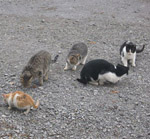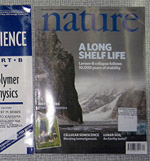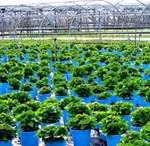Selecting high priority areas for watershed buffer zones...
 Freshwater,
Freshwater,  Planning,
Planning,  Technology-GIS
Technology-GIS A study in the journal Environmental Management tests a new method for selecting priority areas in the watershed for conservation buffer zones and riparian restoration. The practice of designating buffer zones can reduce runoff and erosion while protecting water quality. Conservation efforts in buffer zones can range from plantings of riparian vegetation to restrictions on potentially harmful activities such as development.
But what's the best way to select targets for buffer zones? One common method is to define a fixed width from waterways (e.g. 30 meters). But the problem is that this one-size-fits-all approach may not entirely capture the highest priority areas and can lead to an inefficient use of money and effort. The study looks at a method that tries to improve on traditional buffer zone planning by defining the critical source areas in the watershed for conservation.
Metodology
Critical source areas (CSAs) lie at the intersection of hydrologically sensitive areas (HSAs) - i.e. the places that actively generate runoff in the watershed - and local pollutant sources. The method identifies CSAs using the following steps (this is a very simple outline, please see the full study for a detailed methodology:
- An equation is used to derive a topographic index for the watershed from a digital elevation model and a GIS soil database. The index identifies the probability of generating overland runoff.
- A threshold level is chosen for the topographical index. Areas that have higher topographic indices than the threshold are selected as HSAs
- CSAs can be determined as the intersection of the identified HSAs in step 2 and a set of pollutant source areas in the landscapes ( i.e. areas that have been actively generating pollutants because of intensive land use activities such as agricultural and silvicultural production, residential development, and industrial and commercial uses)
Results
The study tested the cost effectiveness of using this method in a conservation program in the Neshanic River Watershed in Hunterdon County, New Jersey. The state of New Jersey Conservation Reserve Enhancement Program involves paying for the full costs of implementing and maintaining private landowner conservation efforts including installing grass waterways, filter strips, and riparian buffers. The study compared using this new method against scenarios of defining set 30.5 and 54-meter riparian buffers.
- The CSAs identified from the GIS-based method differed substantially from the 30.5 and 54-meter riparian buffers. Much of the CSAs lied outside of the riparian zone in agricultural uplands.
- The study estimated the run-off control potential per dollar cost of implementing 4 different buffer zone scenarios - two using the CSAs generated from the GIS method and two using the set 30.5 and 54-meter buffers. One of the buffer zone scenarios using the CSAs was almost twice as cost effective in controlling run-off than the other scenarios.
Based on these results, the study concludes,
"Because of the profound impacts of runoff on environmental quality, the spatial pattern of CSAs may provide a basis for prioritizing areas of a watershed for other conservation efforts, in addition to conservation buffer placement. Such efforts include conservation easements, open space and farmland preservation that target CSAs for achieving higher environmental benefits. Various land use planning tools and ordinances can be used to protect and preserve CSAs from urban development. Since the HSAs and CSAs can be spatially presented at high resolution, they can be valuable information for designing on-site best management practices that mitigate the negative environmental impacts of runoff."
--Reviewed by Rob Goldstein
Qiu, Z. (2009). Assessing Critical Source Areas in Watersheds for Conservation Buffer Planning and Riparian Restoration Environmental Management DOI: 10.1007/s00267-009-9380-y





Reader Comments